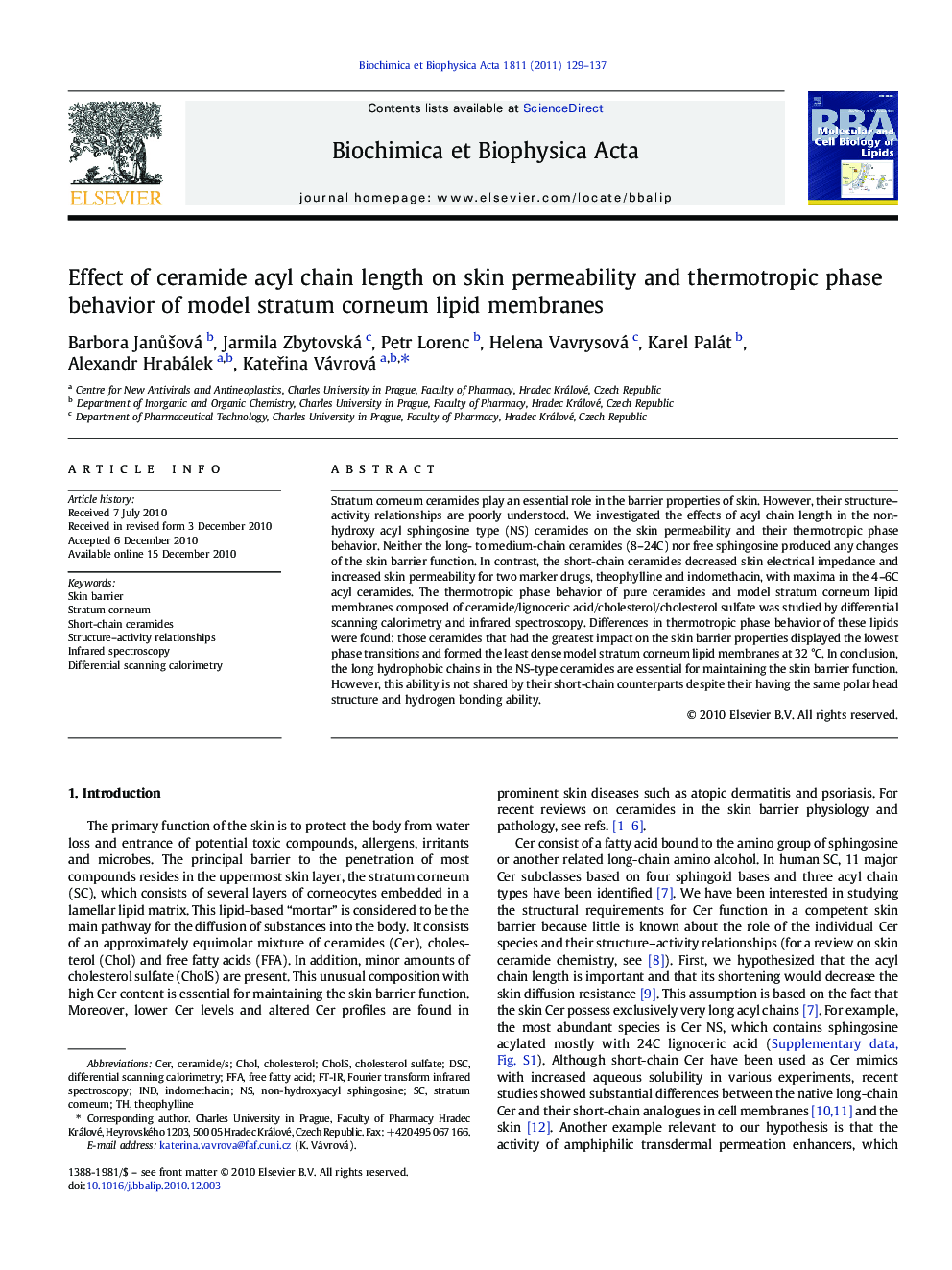| Article ID | Journal | Published Year | Pages | File Type |
|---|---|---|---|---|
| 1949515 | Biochimica et Biophysica Acta (BBA) - Molecular and Cell Biology of Lipids | 2011 | 9 Pages |
Stratum corneum ceramides play an essential role in the barrier properties of skin. However, their structure–activity relationships are poorly understood. We investigated the effects of acyl chain length in the non-hydroxy acyl sphingosine type (NS) ceramides on the skin permeability and their thermotropic phase behavior. Neither the long- to medium-chain ceramides (8–24C) nor free sphingosine produced any changes of the skin barrier function. In contrast, the short-chain ceramides decreased skin electrical impedance and increased skin permeability for two marker drugs, theophylline and indomethacin, with maxima in the 4–6C acyl ceramides. The thermotropic phase behavior of pure ceramides and model stratum corneum lipid membranes composed of ceramide/lignoceric acid/cholesterol/cholesterol sulfate was studied by differential scanning calorimetry and infrared spectroscopy. Differences in thermotropic phase behavior of these lipids were found: those ceramides that had the greatest impact on the skin barrier properties displayed the lowest phase transitions and formed the least dense model stratum corneum lipid membranes at 32 °C. In conclusion, the long hydrophobic chains in the NS-type ceramides are essential for maintaining the skin barrier function. However, this ability is not shared by their short-chain counterparts despite their having the same polar head structure and hydrogen bonding ability.
Graphical AbstractFigure optionsDownload full-size imageDownload high-quality image (135 K)Download as PowerPoint slideResearch Highlights► Short-chain ceramides decrease skin barrier properties. ► Maxima of skin permeability in ceramides with 4–6C acyl. ► Barrier properties of ceramides correlate with their thermotropic behavior.
